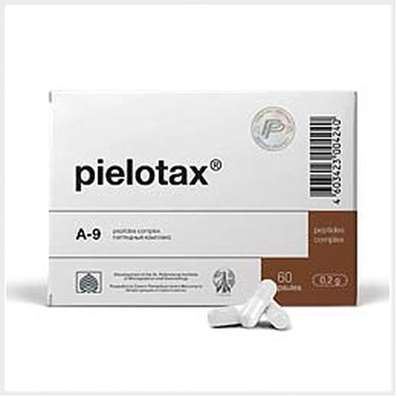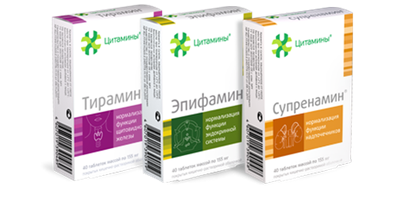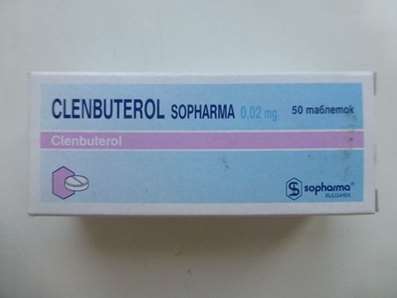Instruction for use: Upsarin UPSA
I want this, give me price
Active substance Acetylsalicylic acid
ATX code N02BA01 Acetylsalicylic acid
Pharmacological groups
NSAIDs - Salicylic acid derivatives
Nosological classification (ICD-10)
G43 Migraine
The pain of migraine, Migraine, hemiplegic migraine, Migraine headache, A migraine attack, Continuous headache, hemicrania
G54.3 Lesions of thoracic roots, not elsewhere classified
Thoracic radicular syndrome
K08.8.0 * Painful toothache
Dentinal pain, Dentinal pains, Pain pulpitis, Anesthesia in dentistry, Pain syndromes in dental practice, Pain after removal of tartar, Pain when extracting a tooth, Toothache, Pain after dental interventions
M25.5 Pain in the joint
Arthralgia, Pain syndrome in musculo-articular diseases, Pain syndrome in osteoarthritis, Pain syndrome in osteoarthritis, Pain syndrome in acute inflammatory diseases of the musculoskeletal system, Pain syndrome in chronic inflammatory diseases of the musculoskeletal system, Pain in the joints, Soreness of the joints, Soreness of joints in severe physical exertion, Painful inflammatory joint damage, Painful conditions of the musculoskeletal system, Painful joint conditions, Painful traumatic affection of joints, Pain in the musculoskeletal system, Pain in Shoulder Joints, Pain in the joints, Joint pain, Joint pain with injuries, Musculoskeletal pain, Pain with osteoarthritis, Pain in the pathology of the joints, Pain in rheumatoid arthritis, Pain in chronic degenerative bone diseases, Pain in chronic degenerative joint diseases, Bone-joint pain, Joint pain, Arthritic pain of rheumatic origin, Articular pain syndrome, Joint pain, Rheumatic pain, Rheumatic pains
M79.1 Myalgia
Myofascial pain syndromes ,Pain syndrome in musculo-articular diseases, Pain syndrome in chronic inflammatory diseases of the musculoskeletal system, Pain in the muscles, Tenderness of muscles, Muscular soreness in severe physical exertion, Painful conditions of the musculoskeletal system, Pain in the musculoskeletal system, Pain in the muscles, Pain at rest, Muscle aches, Muscle pain, Musculoskeletal pain, Myalgia, Muscle pain, Muscle pain at rest, Muscle pain, Muscular pain of non-rheumatic origin, Muscle pain of rheumatic origin, Acute muscle pain, Rheumatic pain, Rheumatic pains, Myofascial syndrome, Fibromyalgia
M79.2 Neurology and neuritis, unspecified
Pain syndrome with neuralgia, Brachialgia, Occipital and intercostal neuralgia, Neuralgia, Neuralgic pain, Neuralgia, Neuralgia of intercostal nerves,Neuralgia of the posterior tibial nerve, Neuritis, Neuritis traumatic, Neuritis, Neurological Pain Syndromes, Neurological contractures with spasms, Acute neuritis, Peripheral neuritis,Post-traumatic neuralgia,Severe pain of a neurogenic nature, Chronic neuritis, Essential neuralgia
N94.0 Pain in the middle of the menstrual cycle
Algomenorea, Painful menstruation, Menalgia, Pain in menstruation
N94.6 Dysmenorrhea Unspecified
Pain during menstruation, Functional disorders of the menstrual cycle, Menstrual cramps, Emmeniopathy, Pain during menstruation, Painful menstrual irregularities, algomenorrhea, algomenoreya, Pain smooth muscle spasm, Pain spasm of smooth muscles (renal and biliary colic, intestinal spasms, dysmenorrhea), Pain spasm of smooth muscles of internal organs (kidney and biliary colic, intestinal spasms, dysmenorrhea), Disalgomenoreya, dysmenorrhea, Dysmenorrhea (essential) (Exfoliative), menstrual disorder, menstruation painful, metrorrhagia, Violation of the menstrual cycle, Menstrual irregularities, Prolaktinzavisimoe menstrual disorders, Prolaktinzavisimoe menstrual dysfunction, Pain spasm of smooth muscles of internal organs, Spasmodic dysmenorrhea, Primary disalgomenoreya
R50.0 Fever with chills
High fever, Heat, Chills, elevated temperature, hyperthermia, Prolonged fever, Feverish syndrome, Fervescence, Increased body temperature in infectious and inflammatory diseases, fever Symptoms, febrile syndrome, Febrile state, Fever, Fever in infectious and inflammatory diseases, Fever with SARS, Fever with cold, Fever for colds, febrility, Feverish condition with flu, Feverish state in infectious and inflammatory diseases , Feverish state of infectious diseases and in the postoperative period, Feverish condition for colds, Febrile of different genesis, Feverish syndrome on the background of infectious diseases, Feverish syndrome in infectious and inflammatory diseases, Feverish syndrome with colds, Feverish syndrome of different genesis, Increased temperature for colds, Increased temperature at catarrhal and infectious and inflammatory diseases, Increased body temperature in cold, etc., Increased body temperature in cold and other infectious and inflammatory diseases, Increased body temperature in cold and other infectious and inflammatory diseases, Fever during pregnancy, Fever with thrombocytopenia, Febrile reaction in blood transfusion
R51 Headache
Pain in the head, Cephalgia, Pain with sinusitis, Pain in the back of the head, Painful headache, Headache of vasomotor genesis, Headache of vasomotor origin, Headache with vasomotor disorders, Headache, Neurological headache, Serial headache
R52.9 Unspecified Pain
Pain after cholecystectomy, Pain shooting, Non-malignant pain, Obstetric and gynecological pain, Pain syndrome, Pain in the postoperative period, Pain in the postoperative period after orthopedic surgery, Pain of inflammatory genesis, Pain than cancer genesis, Pain syndrome after diagnostic procedures, Pain after surgery Diagnostic, Pain after surgery, Pain after orthopedic surgery, Pain after injuries, Pain after the removal of hemorrhoids, Pain at the non-rheumatic inflammation of nature, Pain in inflammatory lesions of the peripheral nervous system, Pain in diabetic neuropathy, Pain in acute inflammatory diseases of the musculoskeletal system, Pain when the tendon pathology, Pain smooth muscle spasm, Pain spasm of smooth muscles (renal and biliary colic, intestinal spasms, dysmenorrhea), Pain spasm of smooth muscles of internal organs, Pain spasm of smooth muscles of internal organs (kidney and biliary colic, intestinal spasms, dysmenorrhea), Pain in trauma syndrome, Pain with injuries and after surgical interventions, Pain in chronic inflammatory diseases of the musculoskeletal system, Pain with duodenal ulcer, Pain syndrome in gastric ulcer, Pain syndrome in gastric ulcer and duodenal ulcer, pain, Pain during menstruation, pain syndromes, painful condition, Painful foot fatigue, Sore gums when wearing dentures, Soreness of the cranial nerves exit points, Painful menstrual irregularities, Painful dressings, Painful muscle spasm, Painful teeth growth, Melosalgia, Pain in the area of the surgical wound, Pain in the postoperative period, Pain in the body, Pain after diagnostic procedures, Pain after orthopedic surgery, Pain after surgery, The pains of the flu, Pain in diabetic polyneuropathy, Pain for burns, Pain during sexual intercourse, Pain during diagnostic procedures, Pain during therapeutic procedures, for colds Pain, Pain in sinusitis, Pain in trauma, Pain traumatic, The pain in the postoperative period, Pain after diagnostic procedures, The pain after sclerotherapy, Pain after surgery, postoperative Pain, Pain postoperative and posttraumatic, posttraumatic pain, Pain when swallowing, Pain in infectious and inflammatory diseases of the upper respiratory tract, The pain of burns, The pain in traumatic muscle injury, Pain in trauma, The pain of tooth extraction, The pain of traumatic origin, Pain caused by spasm of smooth muscles, Expressed pain syndrome, Expressed pain syndrome, traumatic origin, Postoperative pain, Post-traumatic pain, Post-traumatic pain syndrome, Torpid pain, Traumatic pain, Traumatic pain, Mild pain, Moderately severe pain, Moderate pain, Polyarthralgia with polymyositis
Composition
Tablets for the preparation of fizzy drink 1 table.
active substance:
Acetylsalicylic acid 500 mg
excipients: citric acid anhydrous; sodium carbonate anhydrous; sodium bicarbonate; sodium citrate anhydrous; aspartame; povidone; crospovidone; aromatic orange natural
Description of dosage form
Round, flat with beveled edges and risky on one side white tablets. When dissolved in water, bubbles of gas are observed.
pharmachologic effect
Pharmacological action - anti-inflammatory, antipyretic, antiaggregational, analgesic.
Pharmacodynamics
Has anti-inflammatory, analgesic and antipyretic effects associated with the suppression of COX (cyclooxygenase) -1 and -2, regulating the synthesis of PG (prostaglandins). Reduces aggregation, platelet adhesiveness and thrombus formation by suppressing the synthesis of thromboxane A2 in platelets. Antiaggregation effect persists for 7 days after a single dose (more expressed in men than in women).
Dissolving in water, the Upsarin Oopsa tablet forms a buffer solution which, after administration, maintains the active substances in a dissolved form, preventing them from passing into the undissolved form upon contact with the acidic stomach and precipitating in the form of solid particles on its walls. As a result, faster and more complete absorption of the drug is achieved, as well as its better tolerability compared to conventional acetylsalicylic acid tablets.
Indications
Pain syndrome (moderately or mildly expressed) of various origins in adults: headache (including associated with alcohol withdrawal syndrome), toothache, migraine, neuralgia, thoracic syndrome, muscle and joint pain, menstruation pain;
elevated body temperature for colds and other infectious-inflammatory diseases (in adults and children over 15 years old).
Contraindications
hypersensitivity to acetylsalicylic acid, other NSAIDs and drug components;
erosive-ulcerative lesions (in the phase of exacerbation) GASTROINTESTINAL TRACT, gastrointestinal bleeding;
marked violations of the liver or kidneys;
aspirin asthma;
hemorrhagic diathesis (hemophilia, von Willebrand's disease, telangiectasia, hypoprothrombinemia, thrombocytopenia, thrombocytopenic purpura);
exfoliating aortic aneurysm;
portal hypertension;
deficiency of vitamin K;
deficiency of glucose-6-phosphate dehydrogenase, phenylketonuria;
pregnancy (I and III trimester);
the period of breastfeeding.
The drug is not prescribed for children under 15 with acute respiratory infections caused by viral infections, because of the risk of developing Reye's syndrome (encephalopathy and acute fatty liver disease with acute development of liver failure).
With caution - hyperuricemia, urate nephrolithiasis, gout, peptic ulcer and / or duodenal ulcer (in the anamnesis), decompensated heart failure.
Side effects
In recommended doses, the drug is usually well tolerated.
In rare cases, the following side effects may occur:
- allergic reactions: skin rash, bronchospasm, Quincke's edema;
- formation on the basis of the hapten mechanism of the "aspirin" triad (combination of bronchial asthma, recurrent nasal polyposis and paranasal sinuses and intolerance to acetylsalicylic acid and pyrazolone preparations);
- gastrointestinal disorders: nausea, vomiting, epigastric pain, diarrhea (diarrhea), gastrointestinal bleeding (vomiting like "coffee grounds", black tarry stool, decreased appetite, increased activity of hepatic transaminases;
- impaired renal function;
- thrombocytopenia, anemia, leukopenia, hyperbilirubinemia;
- hemorrhagic syndrome (epistaxis, bleeding gums), increase in clotting time.
If any side effects occur, stop taking the medication immediately and inform your doctor.
Interaction
Acetylsalicylic acid increases the toxicity of methotrexate, the effects of narcotic analgesics, other NSAIDs, oral hypoglycemic drugs, heparin, indirect anticoagulants, thrombolytic agents and platelet aggregation inhibitors, sulfonamides (including co-trimoxazole), triiodothyronine; reduces the toxicity of uricosuric drugs (benzbromarone, sulfinpyrazone), antihypertensive drugs and diuretics (spironolactone, furosemide).
SCS (glucocorticosteroids), alcohol and alcohol-containing drugs increase the damaging effect on the mucous membrane of the gastrointestinal tract, increase the risk of developing gastrointestinal bleeding.
Acetylsalicylic acid increases the concentration of digoxin, barbiturates and lithium preparations in blood plasma.
Antatsida, containing magnesium and / or aluminum hydroxide, slow down and worsen the absorption of acetylsalicylic acid.
Dosing and Administration
Inside, previously dissolving the tablet (tablets) in a glass (200 ml) of water or juice.
Adults and children over 15 years of age take 1 tablet. (500 mg) up to 6 times a day.
With severe pain and high temperature - 2 tables. (1 g); the maximum daily dose should not exceed 6 tab. (3 g).
Elderly patients - 1 table. (500 mg) up to 4 times a day; the maximum daily dose should not exceed 4 tab. (2 g).
Frequency and time of admission: the interval between doses of the drug should be at least 4 hours. Regular adherence to the regimen of taking the drug avoids a sharp increase in temperature and reduces the intensity of the pain syndrome.
The duration of treatment (without consulting a doctor) should not exceed 5 days when prescribed as an anesthetic and more than 3 days - as an antipyretic.
Overdose
Symptoms: in the initial stage of poisoning - CNS stimulation, dizziness, severe headache, decreased hearing acuity, visual impairment, nausea, vomiting, increased breathing. Later there comes depression of consciousness up to a coma, respiratory insufficiency, disturbances of a water-electrolyte exchange.
Treatment: induction of vomiting, gastric lavage, the appointment of activated carbon and laxative. Treatment should be carried out in a specialized department.
special instructions
Acetylsalicylic acid reduces the excretion of uric acid from the body, which can cause an acute attack of gout in predisposed patients.
With prolonged use of the drug should periodically conduct a general blood test and analysis of feces for latent blood, monitor the functional state of the liver.
Before surgery, to reduce bleeding during surgery and postoperative period, you should cancel the drug intake for 5-7 days and notify the doctor.
Children should not be prescribed drugs containing acetylsalicylic acid, because in the case of a viral infection, the risk of developing Reye syndrome increases. Symptoms of Reye's syndrome include prolonged vomiting, acute encephalopathy, and enlargement of the liver.
If you need to use the drug during lactation, breastfeeding should be discontinued.
Patients who follow a salt-free or low-salt diet should take into account that each tablet contains 388.5 mg (16.9 mEq) of sodium.
Form of issue
Tablets for the preparation of fizzy drink, 500 mg. In strips 4 pieces; in a pack of cardboard 4 or 25 strips.
Conditions of leave from pharmacies
Without recipe.
Storage conditions
In a dry place, at a temperature of no higher than 30 į C.
Keep out of the reach of children.
Shelf life
3 years.
Do not use after the expiry date printed on the package.

 Cart
Cart





